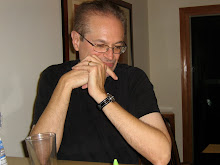Quote of the day:
“We live counterfeit lives in order to resemble the idea we first had of ourselves.”
--Andre Gide
There will be three election days next year in California--in February, June and November. While the state has voted to move its Presidential primary to February, the rest of the June ballot remains intact. In that election, there will be some local races and some initiatives.
One of the June initiatives proposes a radical change in how California elects the president. Right now, all the state’s electors are assigned to the candidate getting the most votes statewide.
The proposal is for two of the electors to be assigned according to statewide results and for the rest to be assigned according to results in each district. There are 53 Congressional districts in California.
The Electoral College is a remnant of the Parliamentary system. The U.S. Constitution establishes the number of electors from each state (the number of Representatives plus Senators) but leaves how to choose the electors to the individual states.
Since the 2000 election there has been renewed interest in moving toward popular election of the president. At first look, this California proposal seems to do that.
But I’m not so sure it’s a good idea. Here are some things to think about.
There are only two other states who assign electors by district, and they’re both small (Maine and South Carolina, I believe). Neither state has ever split its electors.
If we move to elect by district, it doesn’t really move us any closer to direct popular election of the President. Instead it creates 53 small states, each with 710,000 people and their assigned elector (plus a 2% stake in each statewide elector).
Unless other large states also moved to elect by district, there would be an imbalance of power created. The minority party in California would gain seats. The minority party in Florida or Texas would not.
There would also be an imbalance of power with other small states. For example, Wyoming has three electors for 515,000 people. That’s 172,000 per elector. Each California district would have one elector for 680,000 people.
Unless district election is adopted nationally, I don’t see how it benefits California. Am I missing something?
It does, of course, benefit the Republican Presidential candidate.
Thursday, August 9, 2007
Californians, Pay Attention to June!
Labels: Politics
Subscribe to:
Post Comments (Atom)







No comments:
Post a Comment